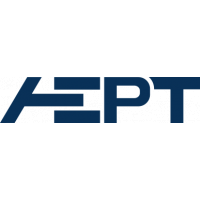Microdischarges occurring during plasma electrolytic oxidation are the main mechanism promoting oxide growth compared to classical anodization. When the dissipated energy by microdischarges during the coating process gets too large, high-intensity discharges might occur, which are detrimental to the oxide layer. In bipolar pulsed plasma electrolytic oxidation a so called 'soft-sparking' mode limits microdischarge growth. This method is not available for unipolar pulsing and for all material combinations. In this work, the authors provide a method to control the size- and intensity distributions of microdischarges by utilizing a multivariable closed-loop control. In-situ detection of microdischarge properties by CCD-camera measurements and fast image processing algorithms are deployed. The visible size of microdischarges is controlled by adjusting the duty cycle in a closed-loop feedback scheme, utilizing a PI-controller. Uncontrolled measurements are compared to controlled cases. The microdischarge sizes are controlled to a mean value of A = 510^-3 mm^2 and A = 710^-3 mm^2, respectively. Results for controlled cases show, that size and intensity distributions remain constant over the processing time of 35 minutes. Larger, high-intensity discharges can be effectively prevented. Optical emission spectra reveal, that certain spectral lines can be influenced or controlled with this method. Calculated black body radiation fits with very good agreement to measured continuum emission spectra (T = 3200 K). Variance of microdischarge size, emission intensity and continuum radiation between consecutive measurements is reduced to a large extent, promoting uniform microdischarge and oxide layer properties. A reduced variance in surface defects can be seen in SEM measurements, after coating for 35 minutes, for controlled cases. Surface defect study shows increased number density of microdischarge impact regions, while at the same time reducing pancake diameters, implying reduced microdischarge energies compared to uncontrolled cases.
| Field | Value |
|---|---|
| Publisher | |
| Authors | |
| Release Date | 2021-01-28 |
| Identifier | 5842c0c6-90b7-46e7-883a-c54b2251544f |
| Permanent Identifier (URI) | |
| Is supplementing | |
| Plasma Source Name | |
| Plasma Source Application | |
| Plasma Source Specification | |
| Plasma Source Properties | Generator: Magpuls MP2-30
Current: I = 0.5 A (mean)
Voltage: V = 0-1000 V
Frequency: f = 2.3-5 kHz
rectangular ubipolr pulsed voltage waveform
galvanostatic
dielectric breakdown
|
| Language | English (United States) |
| Plasma Source Procedure | Two electrodes are placed in an electrolytic cell containing an electrolyte.
The cathode consists of stainless steel.
An oxide coating is grown on an aluminum sample (anode). The plasma is ignited after the local dielectric breakdown of the oxide layer.
The current induces evaporation of water and a bubble grows on the surface of the oxide.
The plasma is ignited inside of the growing water vapor bubble. |
| License | |
| Plasma Medium Name | |
| Plasma Medium Properties | Electrolyte: 2 liter distilled water + 1 g/l KOH
The pressure inside of the bubble is around 1-2 bar.
The bubble size is in the region between a few microns to hundreds of microns.
|
| Plasma Medium Procedure | First, add distilled water to the electrolytic cell.
Then add 1 g/l KOH. The electrolyte is stirred by a magnetic stirrer and cooled with an external cooling circulator at 300 K.
|
| Plasma Target Name | |
| Contact Name | Patrick Hermanns |
| Plasma Target Properties | 6061 aluminum cut to a size of 1 mm (thickness) x 10 mm (length) x 20 mm (height)
|
| Plasma Target Procedure | Polishing, degreasing with acetone and isopropanol, rinsing with distilled water, and hot air drying. |
| Contact Email | |
| Plasma Diagnostic Properties | Spectrometer: OceanOptics QE65 000 spectrometer
Oscilloscope: LeCroy Waverunner 8254
Differential voltage divider: Tektronix ADP305
Current probe: LeCroy CP030
SEM: Jeol JSM-6510
|
| Public Access Level | Public |
| Plasma Diagnostic Name | |
| Funding Agency | |
| Project | |
| Subproject |
Data and Resources
- Figure 7, 8, 9zip
Measured Size and Intensity Distribution for uncontrolled and controlled...
Download - Figure 10, 11, 12 13zip
Time evolution of OES Spectra for controlled and uncontrolled cases.
...
Download


![[Open Data]](https://assets.okfn.org/images/ok_buttons/od_80x15_blue.png)